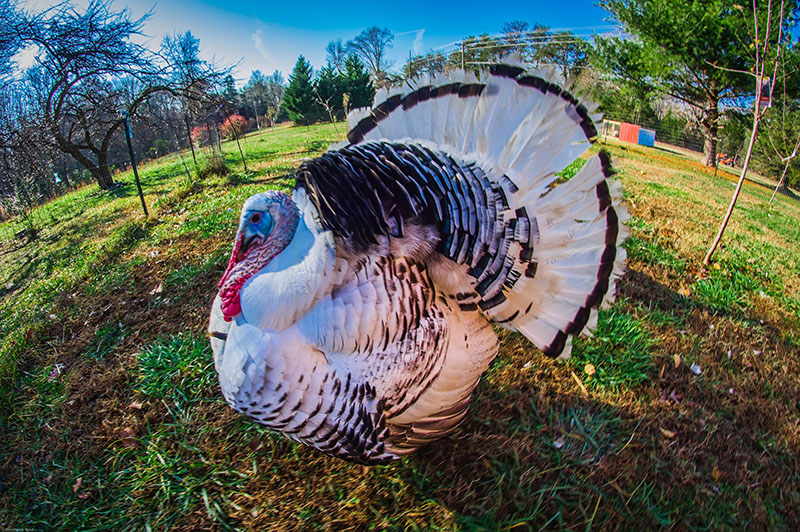Royal Palm Turkey
 The Royal Palm has been in the United States since the 1920's in Florida, however
it is possible they were bred from European breeds because of the similar characteristics
between the English Pied, Crollwitzer and Ronquieres. The Palm color pattern is present
in all three. On the other hand, The Royal Palm's color was not standardized till
the 1920's. It was recognized by the APA in 1971. The plumage is in a distinct pattern;
black rimmed tail, black back, black lined breast feathers, black beard, and white
neck feathers. They have red wattles and red or blue heads. The toms weigh around
22 lbs while the hens weigh around 12 lbs. The Royal Palm is considered small compared
to other varieties. Their personality is very active. They are great foragers.
The Royal Palm has been in the United States since the 1920's in Florida, however
it is possible they were bred from European breeds because of the similar characteristics
between the English Pied, Crollwitzer and Ronquieres. The Palm color pattern is present
in all three. On the other hand, The Royal Palm's color was not standardized till
the 1920's. It was recognized by the APA in 1971. The plumage is in a distinct pattern;
black rimmed tail, black back, black lined breast feathers, black beard, and white
neck feathers. They have red wattles and red or blue heads. The toms weigh around
22 lbs while the hens weigh around 12 lbs. The Royal Palm is considered small compared
to other varieties. Their personality is very active. They are great foragers.
These fowl are not in critical condition and are being watched. They were not bred for muscle or table qualities, but rather for ornamental and exhibition purposes. There is not big market for commercializing the Royal Palm but it is great for small family farms. They are a flight risk. They spotted tint and brown eggs.
References
Ekarius, Carol. "Turkey: Royal Palm." Pocketful of Poultry: Chickens, Ducks, Geese, Turkeys. North Adams, MA: Storey Pub., 2007. 148-49. Print.
"Royal Palm Turkey." The Livestock Conservancy. The Livestock Conservancy, n.d. Web. 15 July 2015.
"Royal Palm Turkeys." Beauty Of Birds. Avianweb, n.d. Web. 15 July 2015.
